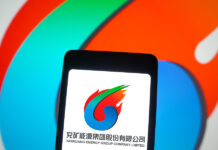China’s 2021 Patent Law brought significant changes to life sciences patent protection, including a patent linkage system akin to the US model, patent term extension (PTE) and patent term adjustment (PTA). Additionally, the law introduced a unique enforcement mechanism – the Major Patent Infringement Dispute Adjudication (Major Case) – empowering China’s national intellectual property office to handle patent infringement disputes.
These reforms aim to strengthen life sciences patent protection in China, aligning with the country’s increasing focus on drug innovation. As we approach the three-year mark since enactment, this article provides updates and practical insights into these legislative components.
PATENT LINKAGE
Although largely mirroring the framework of the US Hatch-Waxman Act, the Chinese patent linkage system differs in several key aspects. These include dual forums, shorter regulatory stays, longer exclusivity for a first generic version, and limited protection for biologics. Early cases have shed light on how these issues have unfolded in practice.
Dual forums. In a similar fashion to regular patent infringement cases, China offers two dispute resolution forums for linkage cases: judicial proceedings before the Beijing Intellectual Property (IP) Court; and administrative proceedings before the China National Intellectual Property Administration (CNIPA). Given shorter duration of administrative actions (three to six months) compared to court cases, many anticipate the CNIPA becoming the preferred forum for linkage cases.

International Partner
King & Wood Mallesons
Beijing
Tel: +86 10 5878 5066 / +86 13911826138
Email: gordon.gao@cn.kwm.com
Shorter regulatory stays. In the Chinese system, a linkage case will trigger a nine-month stay of regulatory approval, significantly shorter than the 30-month stay in the US system. As CNIPA actions typically conclude within nine months and court cases often take longer, this further encourages the choice of the CNIPA over the Beijing IP Court.
Issues. Under the Chinese system, a linkage case addresses whether or not an abbreviated new drug application (ANDA) falls within the scope of a patent claim. The CNIPA has construed this narrowly and refused to address non-infringement defences, as decided in Daiichi Sankyo v Yangzijiang (2022). However, according to Supreme People’s Court judicial interpretations, defendants are allowed to raise these issues in court cases. This may also lead patentees to favour the CNIPA over the court.
Statistics on choice. Statistics confirm the CNIPA being preferred over Beijing IP Court. By 15 March 2024, the CNIPA had disclosed 76 linkage case decisions with an average trial period of 6.1 months. In contrast, the Beijing IP Court published 43 rulings on linkage lawsuits with an average trial period of 7.7 months.While not all decisions are published, these numbers align with the predicted choice of forum. Notably, the average trial period of 7.7 months for court cases is already faster than regular patent infringement cases, but only an effective decision can trigger a stay.
It is important to note that China operates on a two-instance system, where the first-instance court decision is not final. Therefore, most court cases are unlikely to reach an effective decision within nine months, resulting in patentees being unable to block generic marketing even if favourable findings are obtained in a linkage case in a court proceeding.
First-generic exclusivity. First-generic exclusivity serves as a crucial incentive for generics, balancing interests within the system. In China, the system provides a 12-month market exclusivity period, twice the duration of the 180-day exclusivity in the US.
However, China has elevated the standards for obtaining this benefit: only the first generic to have received regulatory approval and challenged the patent successfully will enjoy the 12-month market exclusivity. The rules specify that to successfully challenge patents, generics need to invalidate the patents. Generics that have been successfully designed around the patents do not qualify for exclusivity.
This essentially means that, to receive this benefit, the first generic must clear the way for all other generics. On 2 January 2024, Chia Tai Tian Qing’s everolimus obtained approval with a 12-month market exclusivity, making it the first and, to date, the only generic to have received this benefit.
Some believe this high burden may discourage generics from challenging patents, thus preventing the system from fully functioning. To 15 March 2024, a total of 7,991 patent certifications were filed: 7,923 for chemical drugs; 67 for biologics; and one for a traditional Chinese medicine. Only 408 certifications are type IV certifications, accounting for 5.1% of all certifications.

International Partner
King & Wood Mallesons
Beijing
Tel: +86 10 5878 5092 / +86 13810415686
Email: sherry.yao@cn.kwm.com
Biologics. Unlike the US system, China’s linkage covers both chemical drugs and biologics, but with limited protection for biologics.
For biologics, brand names can register patents and biosimilar applicants must file patent certifications. However, a linkage case does not stay biosimilars’ regulatory review, and biosimilars do not receive market exclusivity.
In addition, patent registration is more limited for biologics. For chemical drugs, eligible patents include active pharmaceutical ingredient (API), medical use and formulation patents, while only sequence and medical use patents are allowed for biologics.
Given these restrictions, it remains unclear how effectively biologics are being protected under the current system.
Patent notification. Unlike the US system, where generics have clear notification requirements, the situation is less clear in the Chinese system. Regulations mandate generics notify the branded drug of their type IV certification within 10 days of an ANDA’s acceptance, but there is no clear guidance on the consequences for non-compliance or remedies for branded drugs in the event of non-compliance. Early decisions have addressed this issue, but failed to provide any remedy.
In Chugai v Wenzhou Haihe (2022), the generic failed to notify the branded drug or provide the appropriate technical documents until after a linkage case had commenced. The Supreme People’s Court criticised Wenzhou Haihe but imposed no sanctions. Consequently, branded drugs must actively monitor the linkage system rather than relying solely on generic notifications. Failure to do so may result in missed opportunities to commence linkage cases on time.
Published cases. Looking at the published decisions in patent linkage cases, formulation and medical use patents are the most litigated. However, branded drugs face low success rates, with less than one-third winning in CNIPA cases and even fewer in court. Challenges faced by branded drugs include invalidity claims, design around, and legal barriers such as construing Swiss-style use patents. Crafting careful strategies tailored to China’s unique issues is crucial for winning cases in China.
PTA AND PTE
China’s 2021 Patent Law introduced provisions for PTE and PTA. However, detailed implementation measures were not enacted until 20 January 2024, with the release of the 2023 Implementation Rules of the Patent Law and the 2023 Patent Examination Guidelines.
These measures outline specific requirements and calculations for PTA and PTE. To the disappointment of many international drug companies, the rules stipulate that PTE only applies to new drugs, defined as those not launched anywhere in world, when applying for marketing approval in China. This would exclude many innovative drugs already launched in other countries.
MAJOR CASE
The 2021 Patent Law enables the CNIPA to handle patent infringement cases with significant influence across the country. Compared to court decisions, the main advantage of a major case is its short duration. The CNIPA should issue a final decision within four months of docketing the case. This decision is enforceable on issuance, even if appealed. In contrast, a court proceeding takes much longer, with the first-instance proceedings lasting six to 12 months and not enforceable until the second-instance decision, which could take another six to nine months.
The remedy in a major case is a nationwide injunction, while damages are not available. The major case has attracted significant attention from drug companies, where securing a quick injunction is the primary goal in patent infringement cases.
The rules provide threshold conditions for matters to qualify as a major case:
- A large amount of economic benefit is involved;
- The development of an entire industry is impacted;
- The case involved multiple jurisdictions at the provincial level; and
- There may be other potential important influences.
These conditions are generally defined, with No. 3 on the list offering more specific guidance.
So far there has been only one decision handed down by the CNIPA, in a case handled by the authors’ team. The team filed the first batch of cases before the CNIPA on behalf of a pharmaceutical client for an important drug that was copied and offered for sale in more than 20 provinces across China. Within months of filing, the CNIPA issued an infringement decision, effectively halting nationwide sale of the generics.
This success marks an important milestone in patent litigation in China, demonstrating the CNIPA as a viable mechanism for preventing generics from eroding market share. Pursuing a major case before the CNIPA for a swift injunction, then seeking damages in civil court, could be an effective tactic for drug companies to safeguard their interests in the Chinese market.

18th Floor, East Tower, World Financial Center
1 Dongsanhuan Zhonglu, Chaoyang District
Beijing, 100020
P.R. China
Tel: +86 10 5878 5578
Fax: +86 10 5878 5566
www.kwm.com
































